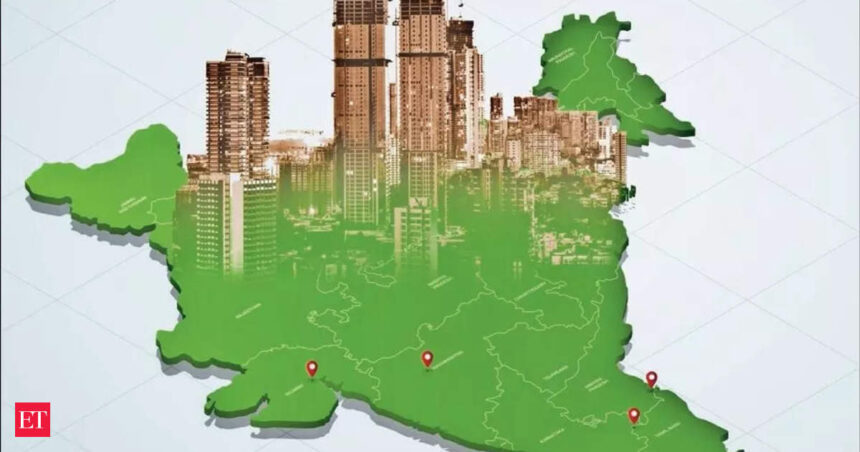The central government has recently presented six concept notes to state governments to address the issues of unemployment and underemployment in rural areas, as well as the obstacles hindering job creation in non-metro cities. The states will provide feedback on these notes at the upcoming fourth National Conference of Chief Secretaries, to be chaired by the prime minister in November. Additionally, the conference may also delve into another emerging trend in India: the growth of satellite cities, which are gradually gaining momentum.
Sri City in Andhra Pradesh, Hosur in Tamil Nadu, Dahej and Dholera in Gujarat, Manesar in Haryana, Greater Noida in Uttar Pradesh, and Shendra-Bidkin and Navi Mumbai in Maharashtra are some of the new emerging satellite cities that are poised to become significant industrial and population centers. These cities are easing the burden on overcrowded major cities like New Delhi, Mumbai, Bengaluru, Chennai, and Ahmedabad. Experts in urban planning and development believe that these satellite cities, which draw from the overflow of adjacent megacities, could offer a sustainable solution to India’s urban challenges.
One unique example is Sri City, a privately owned township located 55 km from Chennai in Andhra Pradesh. This corporate-driven model is home to numerous multinational companies, including Kellogg’s, Alstom, Colgate-Palmolive, and PepsiCo. The city also houses Asia’s largest chocolate factory, operated by Mondelez. With its strategic location near four seaports and two airports, Sri City has become a magnet for global investments. The city’s workforce is expected to grow significantly, with plans for further expansion to accommodate more residential options.
Amitabh Kant, India’s G20 Sherpa, highlights the potential of cities like Shendra-Bidkin and Dholera as sustainable industrial hubs with residential spaces. These cities are designed to attract export-oriented businesses and cutting-edge industries, contributing to economic growth. Kant also mentions the thriving Noida-Greater Noida region, which benefits from its proximity to Delhi and robust infrastructure, attracting businesses and enhancing residential opportunities.
The introduction of GST in 2017 has facilitated interstate trade, making the location of satellite cities across state borders less of a concern for businesses. This has spurred growth in places like Hosur, which have seen development due to their proximity to major cities like Bengaluru. As India’s urban population continues to grow, the expansion of satellite cities and suburban areas is crucial for balanced regional development.
Urban planners emphasize the importance of smart town planning and investment in connectivity to harness the potential of satellite cities for industrial expansion, innovation, and job creation. Vertical growth with high-rise buildings is seen as essential to maximize population density and support public transit systems.










